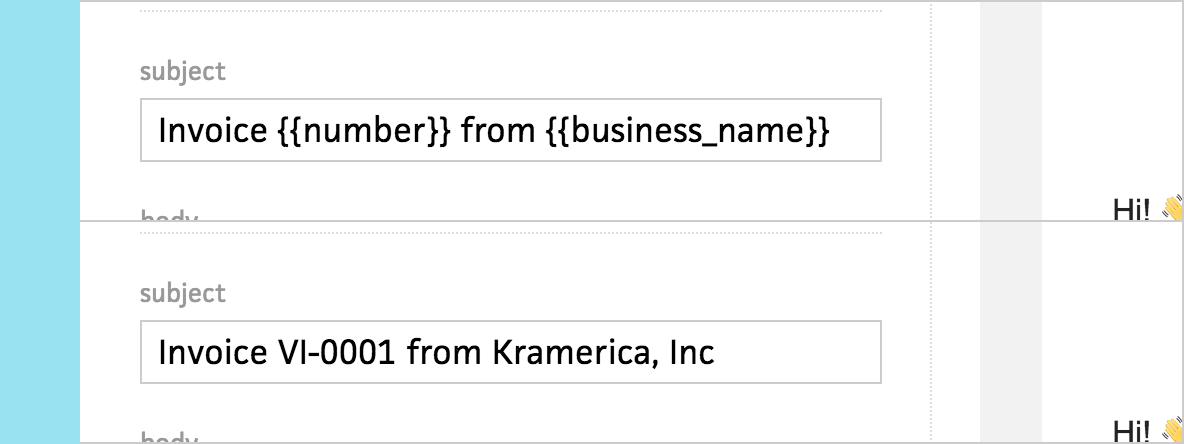
Sending Invoices

With Cushion, you can send invoices to clients by either downloading a PDF, copying a link, or sending an email directly from Cushion. The preferred method is sending from Cushion, so you can track when your client views the invoice and provide an option to accept payment (if you enabled the Stripe integration).

Clicking the Send button opens a window that lets you customize and preview the invoice email.
Client Contact

At the top, you can select which contact to send the email to. If a client has several contacts, this is useful for choosing the one who handles payment. Cushion uses the contact’s name to enrich the To field of the email.
Default Email

Before editing the email for this individual invoice, you can edit the default email by clicking the button at the bottom left of the window.
Reply-To Address

The first option for your default email is the Reply-To email address. Because we’re unable to send emails directly from your email address, Cushion specifies the email address to use when your client hits reply. Instead of replying to Cushion, they’ll reply to you.
Email Template

Next, you can modify your default subject line. This field supports several variables, which are listed at the bottom of the window. At the very least, you should include the invoice number and your business name.
If you need to update your business name, you can do so from the invoice template window or in the preferences.

The default email body is similar to the subject line in that it supports variables, but it also supports Markdown formatting. You can use Markdown to create headers, bold or italicize type, or separate sections of the email with horizontal rules.
On the right, you’ll see a preview of your email as you edit the body. Cushion formats Markdown text and insert variables in realtime, so you know exactly what your client will receive. You can always tweak an invoice email separate from the default email.
Invoice Link & Passcode
Cushion uses an invoice link to send to your client, so they can view the invoice, download or print a copy, or pay for the invoice (if you enabled the Stripe integration).

The invoice link uses the in.vc domain to avoid confusing your client with Cushion’s URL. By default, the link is very long, but you can create a client passcode to make the link much shorter. Cushion will automatically include the passcode underneath the link.
To create a passcode for a client, simply edit the client and enter or generate a passcode.

Upon clicking the invoice link, if your client has a passcode, Cushion will prompt them to enter it. Cushion will redirect the client to the invoice after submitting the correct passcode.
Track When Viewed

Cushion tracks when your client views the invoice, so you’re always aware of whether they’ve seen it or not. Cushion stores the viewed date, which will automatically appear in the invoice schedule graph.
If an invoice is approaching its due date and the client still hasn’t viewed the invoice, you know you can confidently follow up. We plan to add an option to automate follow-up emails.
If you have any additional questions about invoicing in Cushion, contact us.